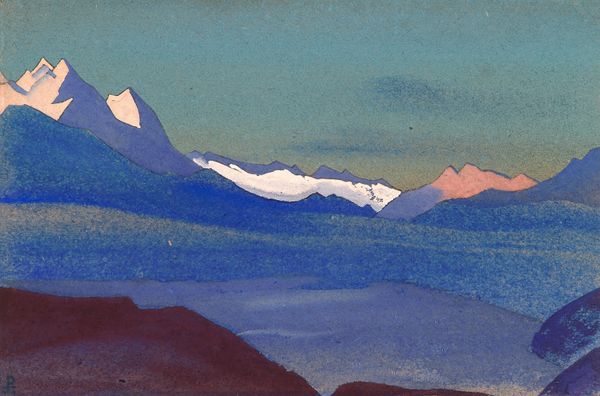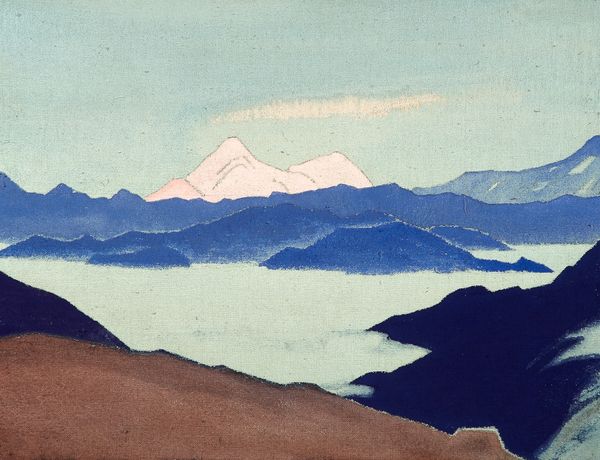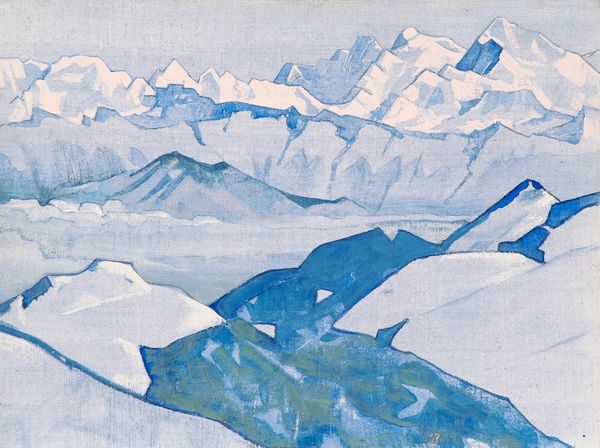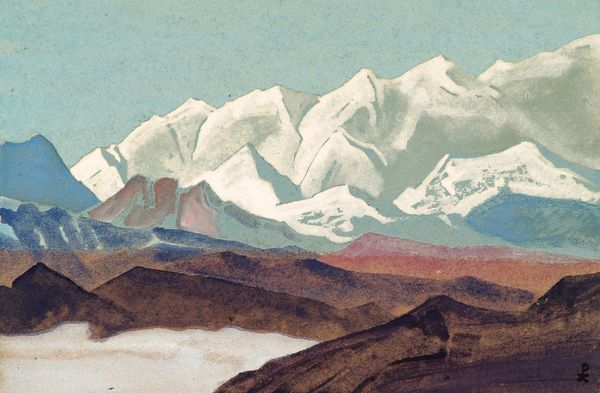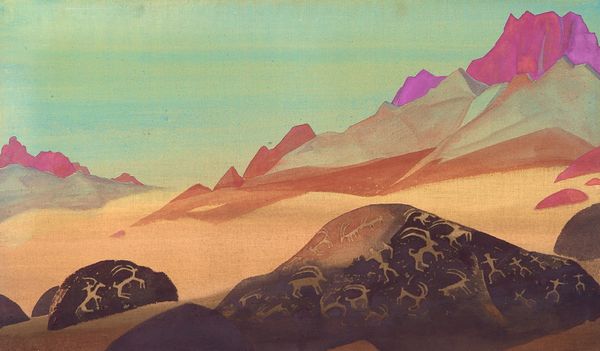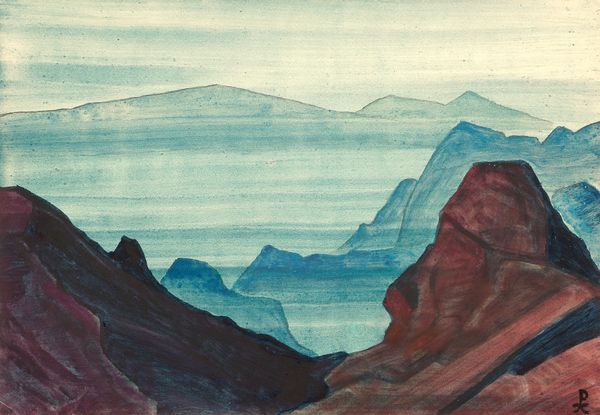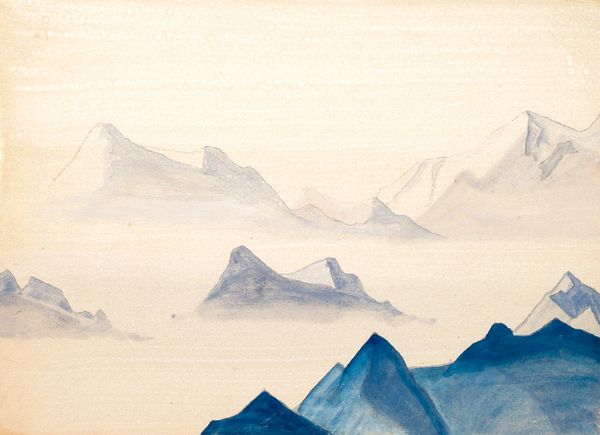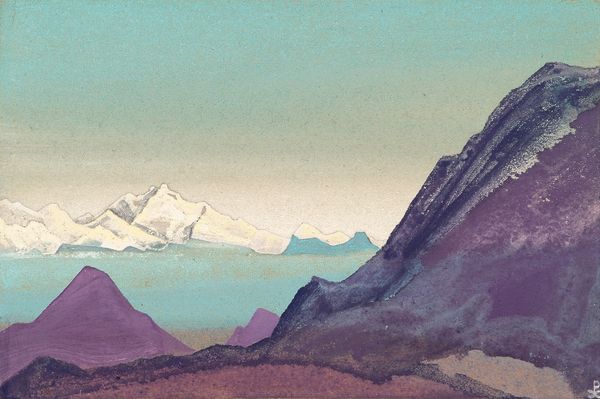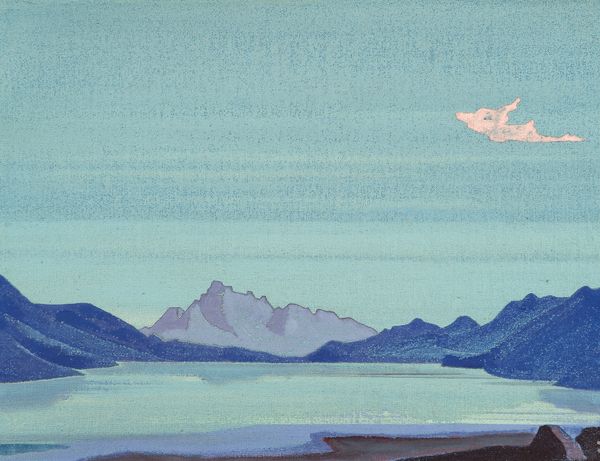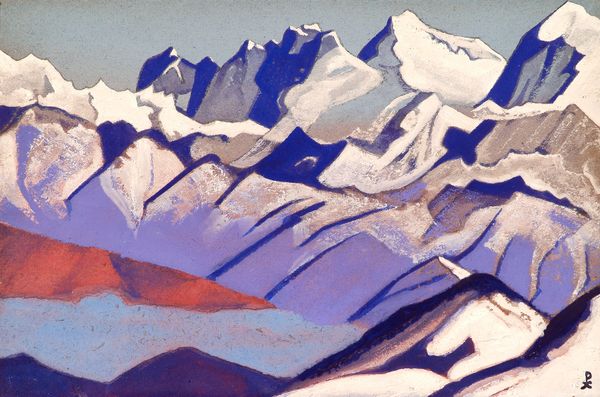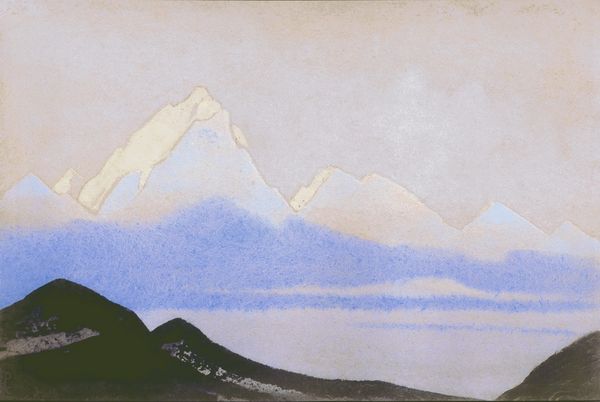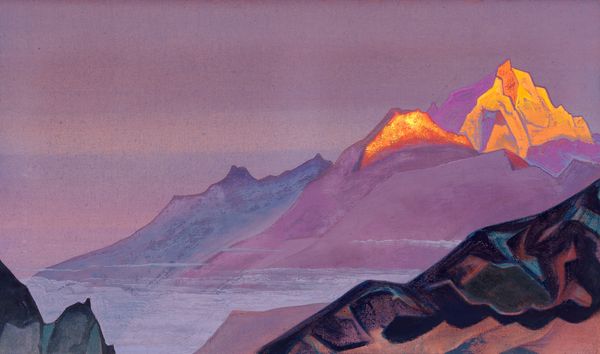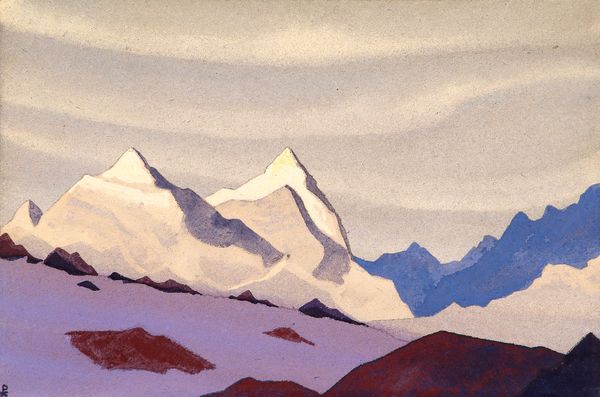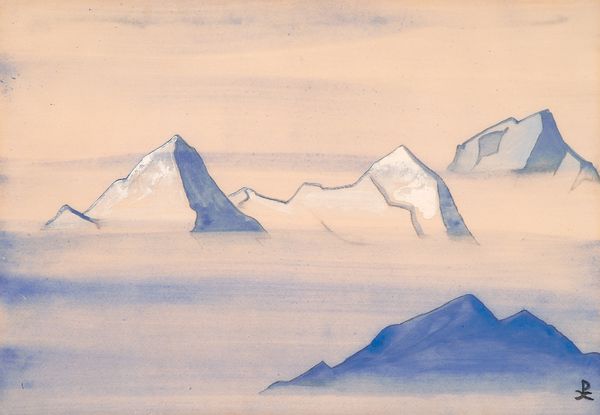
Copyright: Public domain
Nicholas Roerich painted ‘Elbrus, Caucasus’ using tempera, a fast-drying painting medium, during a career that spanned the late 19th and first half of the 20th centuries. Roerich was deeply involved in the spiritual and cultural movements of his time, and this landscape offers a window into the artistic and philosophical concerns of early 20th-century Russia. As a theosophist, Roerich saw art as a conduit to spiritual understanding, and his paintings often depict mystical and symbolic landscapes. Here we see Elbrus, the highest mountain in Russia, rendered with a sense of reverence and awe. Roerich's work has strong ties to Russian Symbolism, visible in the non-naturalistic colors and simplified forms, creating an atmosphere of otherworldly beauty and contemplation. If you want to delve deeper into Roerich's influences, look into the cultural context of Russia at the time, particularly the rise of esoteric and spiritual societies and their intersection with artistic expression. These resources will show you how art responds to and shapes cultural values.
Comments
No comments
Be the first to comment and join the conversation on the ultimate creative platform.
